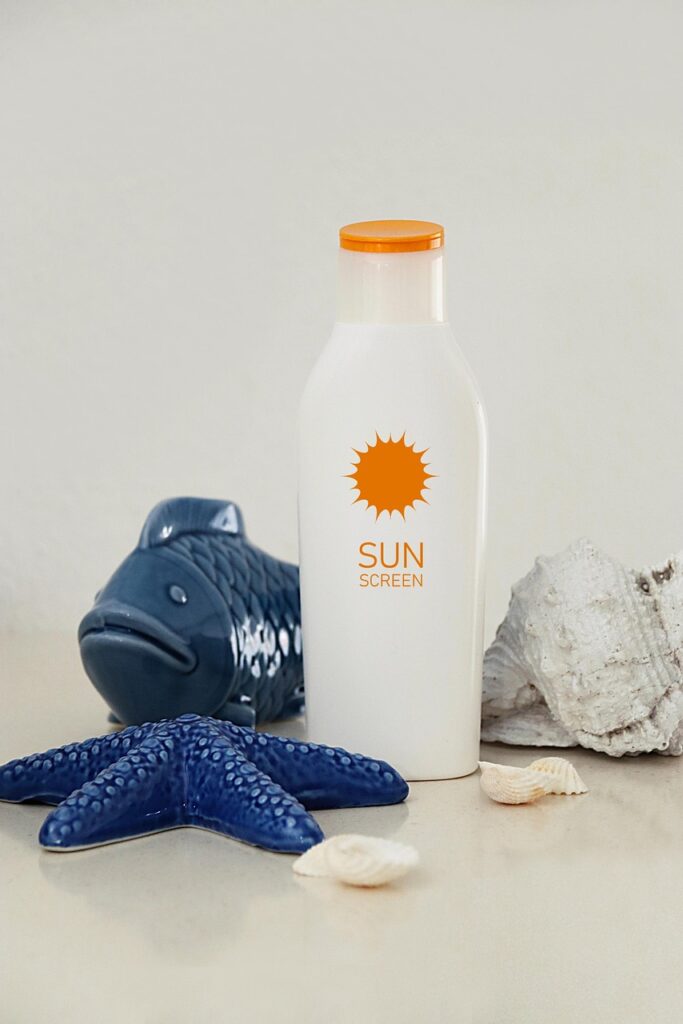The golden glow of a tan has long been associated with health and vitality, but recent research is shining a harsh light on this dangerous misconception. Young people, in particular, are at risk of developing skin cancer due to a series of “dangerous” myths surrounding sun protection. A survey conducted by the Orlando Health Cancer Institute involving over 1,000 American adults has revealed startling beliefs that could lead to risky behavior under the sun.
A series of “dangerous” myths surrounding sun protection
One of the most pervasive myths is the idea that a tan signifies health. This belief is held by a significant 32 percent of adults, according to the research. Dr. Rajesh Nair, an oncology surgeon at the Orlando Health Cancer Institute, firmly counters this notion, stating, “There is no such thing as a healthy tan, as it’s really just a visual manifestation of damage to the skin.” The allure of a bronzed complexion is a siren call that often leads to increased exposure to harmful UV rays, and consequently, a higher risk of skin cancer.
The misconceptions don’t stop there. Nearly a quarter of adults believe that simply staying hydrated by drinking water can prevent sunburn. Dr. Nair debunks this myth, clarifying that there is “no scientific data suggesting that drinking water provides any protection from the sun.” While hydration is essential for overall health, it does not offer a shield against the UV radiation that causes sunburn.
Another alarming belief is held by 14 percent of adults under 35, who think that applying sunscreen daily could be more harmful than direct sun exposure. This is a particularly concerning statistic, as it suggests a distrust in one of the most recommended methods of sun protection. Dr. Nair reassures that the benefits of sunscreen “far outweigh any known risks.” For those concerned about chemical ingredients, he suggests mineral sunscreens containing zinc oxide, which provide a physical barrier to the sun, and clothing with SPF protection as safe alternatives.
The prevalence of such myths is exacerbated by the overwhelming amount of information available online, making it challenging to discern fact from fiction. Dr. Nair expresses concern over the difficulty people face in navigating this sea of information, which can lead to “really dangerous ideas that put them at added risk.”
Brianna Starr’s personal story underscores the importance of accurate information. As a young adult, she prioritized tanning over skin health, a decision that changed when her sister was diagnosed with melanoma at 19. Starr’s experience led her to regular dermatologist visits, where she identified two potentially dangerous moles. Now, she is vigilant about sun protection, a diligence that experts echo.
The recommended approach to sun protection is the use of sun creams with an SPF of 30 or higher, reapplying every two hours, and after swimming or sweating. Regular screenings for skin cancer are also crucial for early detection, particularly as skin cancer rates are rising among younger patients. Dr. Nair emphasizes the importance of balancing outdoor activity with effective sun protection, as “sun protection can be lifesaving.”
As summer approaches and the temptation to bask in the sun grows, it’s vital to address the myths that cloud our judgment about sun safety. The Canadian Dermatology Association (CDA) recommends a minimum SPF of 30, but higher SPFs can offer additional protection. This is because most people apply less than the recommended amount of sunscreen, reducing its effectiveness. A study in the Journal of the American Academy of Dermatology found that SPF 100+ was significantly more effective in preventing sunburn compared to SPF 50+, especially when sunscreen is not applied generously.
The sunscreen ingredient debate is filled with misinformation
A recent study about the sunscreen ingredient octocrylene degrading into benzophenone has sparked concerns. Benzophenone has been labeled as a mutagen, carcinogen, and endocrine disruptor, but the scientific consensus on its effects in humans is not as clear-cut as some sources suggest. The International Agency on Research in Cancer classifies benzophenone as ‘Possibly Carcinogenic to Humans,’ a category that includes a wide range of substances with uncertain effects.
It’s crucial to approach such studies with a critical eye and to consider the broader scientific context. The European Food Safety Authority’s assessment of benzophenone, for example, found no concern regarding genotoxicity and concluded that there is no safety concern for its use as a flavoring substance. This highlights the importance of relying on comprehensive reviews and regulatory assessments when evaluating the safety of sunscreen ingredients.
The journey to sun safety is fraught with myths that can lead to harmful practices. It is imperative to seek out reliable information and to adopt a sun protection routine that includes the use of high-SPF sunscreens, regular reapplication, protective clothing, and skin cancer screenings. By doing so, we can enjoy the sun’s warmth without sacrificing our health to dangerous misconceptions.
Diving deeper into the science of sun protection, we must scrutinize the efficacy and safety of sunscreen ingredients, particularly in light of recent research and public concern. The Sun Protection Factor, commonly known as SPF, is a critical measure that indicates the level of protection a sunscreen provides against UVB rays, which are primarily responsible for sunburn and can contribute to skin cancer. SPF ratings are determined by comparing the amount of time it takes for skin to burn with sunscreen as opposed to without it. For example, an SPF of 30 means that theoretically, it would take you 30 times longer to burn than if you were not wearing any sunscreen at all.
Sunscreen effectiveness is not just about SPF
The manner in which sunscreen is applied plays a significant role. Jennifer Beecker, a dermatologist and research director at The Ottawa Hospital, points out that most people do not apply enough sunscreen, which can significantly reduce its effectiveness. This under-application is a common issue, and it’s why higher SPF products can be beneficial. They may provide a buffer against the reduction in protection caused by applying less than the recommended amount.
The Journal of the American Academy of Dermatology published a study that compared the effectiveness of SPF 100+ to SPF 50+. The results showed that SPF 100+ was significantly more effective in preventing sunburn, particularly when sunscreen is not applied generously. This finding supports the recommendation to use a higher SPF sunscreen to ensure adequate protection, especially when considering that many individuals do not apply sunscreen as thoroughly as they should.
When it comes to sunscreen ingredients, there has been a lot of discussions, particularly around the ingredient octocrylene. Octocrylene is a common ingredient in sunscreens, and under certain conditions, it can degrade into benzophenone. A recent study highlighted concerns about benzophenone being a mutagen, carcinogen, and endocrine disruptor. This has understandably raised alarms for consumers who are trying to make safe choices for sun protection.

The study in question analyzed 17 different sunscreens and found that all of the ones containing octocrylene had benzophenone present, with levels increasing after six weeks of storage at 40°C. While this might sound concerning, it’s important to remember that the conditions of the study do not necessarily replicate typical storage conditions for sunscreen. Moreover, the interpretation of the risks associated with benzophenone is not as straightforward as it might seem.
The International Agency on Research in Cancer has classified benzophenone as ‘Possibly Carcinogenic to Humans,’ which is a category that includes substances with uncertain effects. This classification indicates that there is not enough data to make a definitive statement about the carcinogenicity of benzophenone in humans. Furthermore, the European Food Safety Authority found no concern regarding genotoxicity and concluded that there is no safety concern for the use of benzophenone as a flavoring substance. These assessments suggest that the risks may not be as dire as some reports have indicated.
It’s essential to approach the information about sunscreen ingredients with a critical eye and to rely on comprehensive reviews and regulatory assessments. While it’s important to be aware of the ingredients in the products we use, it’s equally important not to jump to conclusions based on incomplete or out-of-context data.
In light of these concerns, some may prefer to use mineral sunscreens containing zinc oxide or titanium dioxide, which provide a physical barrier to UV rays. These ingredients are generally recognized as safe and effective by dermatologists. Additionally, wearing protective clothing with SPF and seeking shade during peak sun hours can significantly reduce the risk of skin damage.
As we navigate through the myriad of information available, it’s crucial to remember the core principles of sun safety. Using sunscreens with a high SPF, reapplying them every two hours or after swimming or sweating, and undergoing regular skin cancer screenings are all vital steps in protecting ourselves from the harmful effects of the sun. By staying informed and making conscientious choices, we can enjoy the benefits of the sun without compromising our health.
In wrapping up this exploration of sun protection, let’s remember that the sun’s rays can be as harmful as they are warm. It’s our responsibility to sift through the noise and arm ourselves with the knowledge that can safeguard our health. The myths have been debunked, the facts laid bare, and now it’s up to us to embrace the sun with caution and care. Let’s not allow dangerous misconceptions to cloud our judgment, but rather let the light of truth lead the way to a sun-safe future.
Related posts:
Young adults at risk of skin cancer due to ‘dangerous’ sun protection myths
Octocrylene Causes Cancer? and I’m Propaganda Now
Skin care Myths: We’re Debunking It





